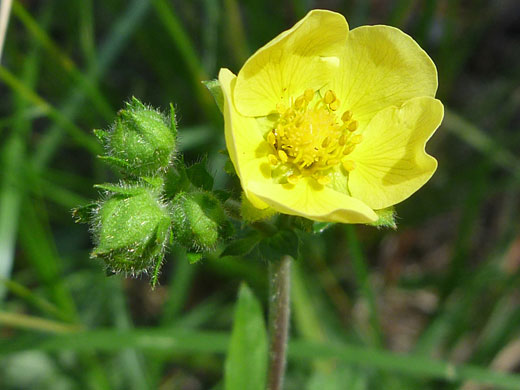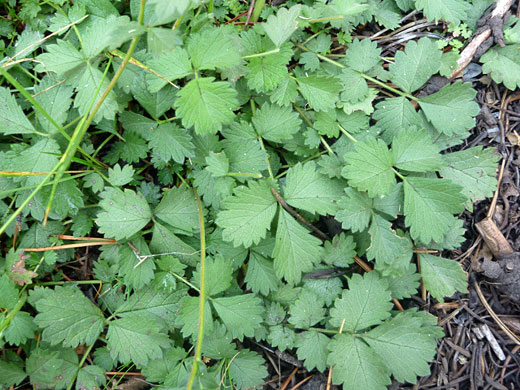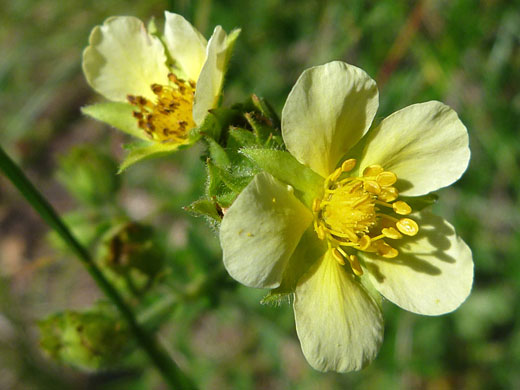Common name:
Sierran woodbeauty
Family:
Scientific name:
Drymocallis lactea
Synonym:
Potentilla glandulosa ssp nevadensis
Main flower color:
Range:
California, Nevada and states to the north
Height:
Between 4 and 24 inches
Habitat:
Rocky, moist locations; 3,000 to 12,100 feet
Leaves:
Up to 7 inches long; pinnately divided into 7 or 9 toothed, obovate leaflets
Season:
May to September
Leaves of drymocallis lactea are quite distinctive, pinnately divided into three or four pairs of opposite, lateral leaflets, quite well separated, and a slightly larger terminal leaflet. Leaflets have large, regularly spaced teeth along the edges; four to ten per side. They have prominent side veins, pinnately forked from the midvein. Leaves and stem have a light covering of short hairs.
Flowers grow at the top of the stems, in small clusters; they are attached by short pedicels (less than half an inch long), which, like the calyces, bear both long glandular hairs and shorter, non-glandular hairs. The five round, yellow petals open fully when mature, and are slightly longer than the sepals, the tips of which may be just visible from above. The flower center contains around 25 yellow stamens around a group of yellow pistils.
Var austiniae has open flower clusters, yellow petals and branches somewhat spreading, while var lactea has compact clusters, cream-colored petals and branches pointing more upwards.
Flowers grow at the top of the stems, in small clusters; they are attached by short pedicels (less than half an inch long), which, like the calyces, bear both long glandular hairs and shorter, non-glandular hairs. The five round, yellow petals open fully when mature, and are slightly longer than the sepals, the tips of which may be just visible from above. The flower center contains around 25 yellow stamens around a group of yellow pistils.
Var austiniae has open flower clusters, yellow petals and branches somewhat spreading, while var lactea has compact clusters, cream-colored petals and branches pointing more upwards.
All Contents © Copyright The American Southwest | Comments and Questions | Contribute | Site Map






